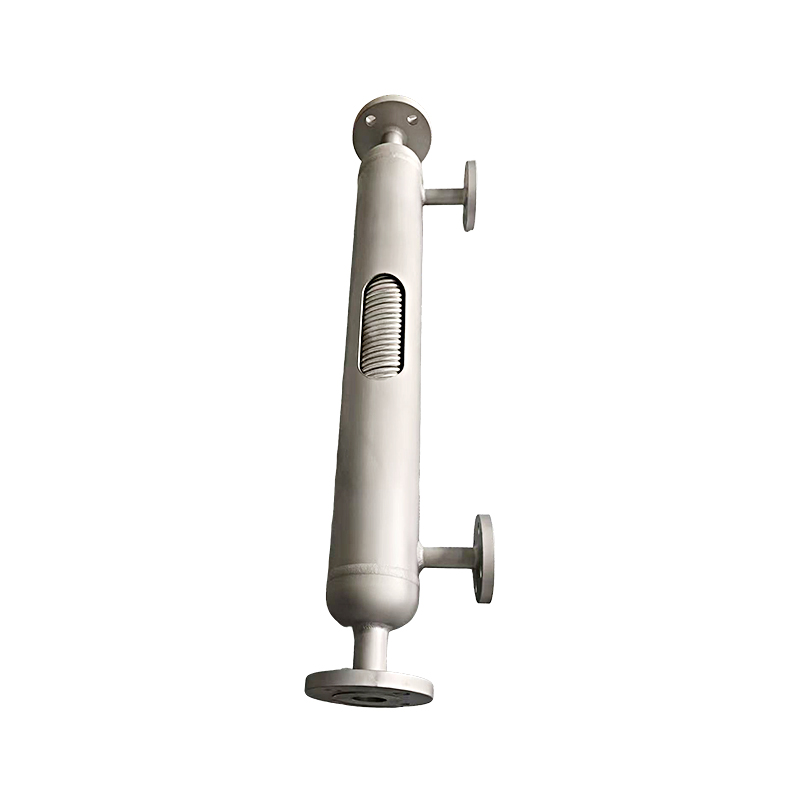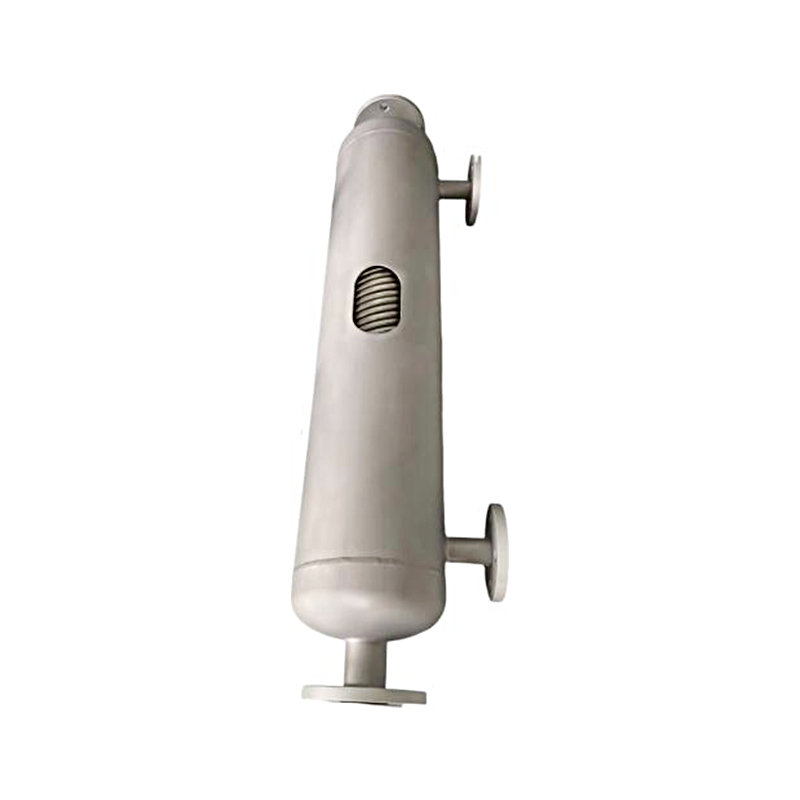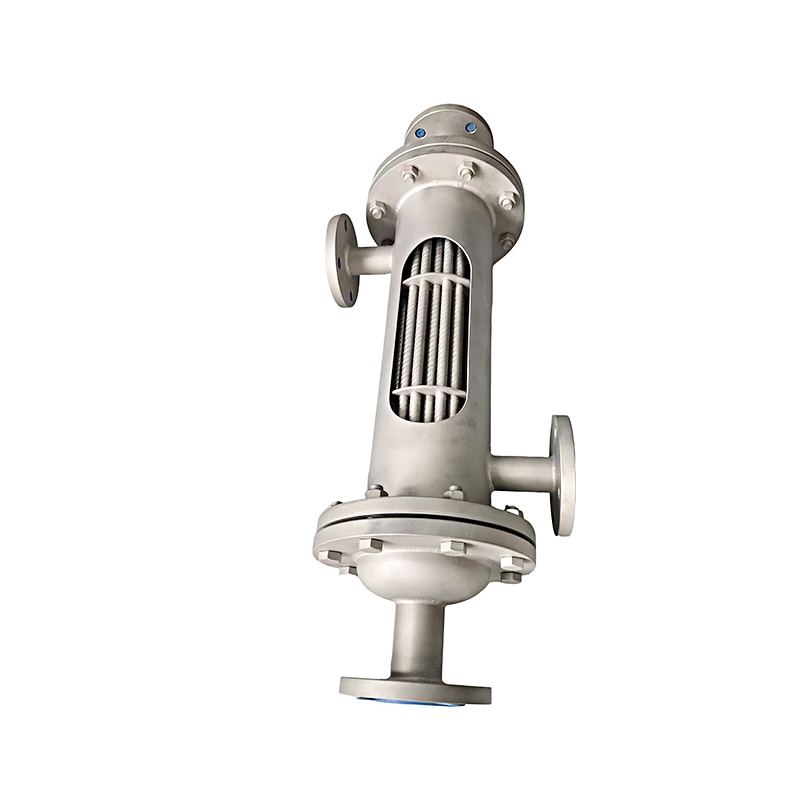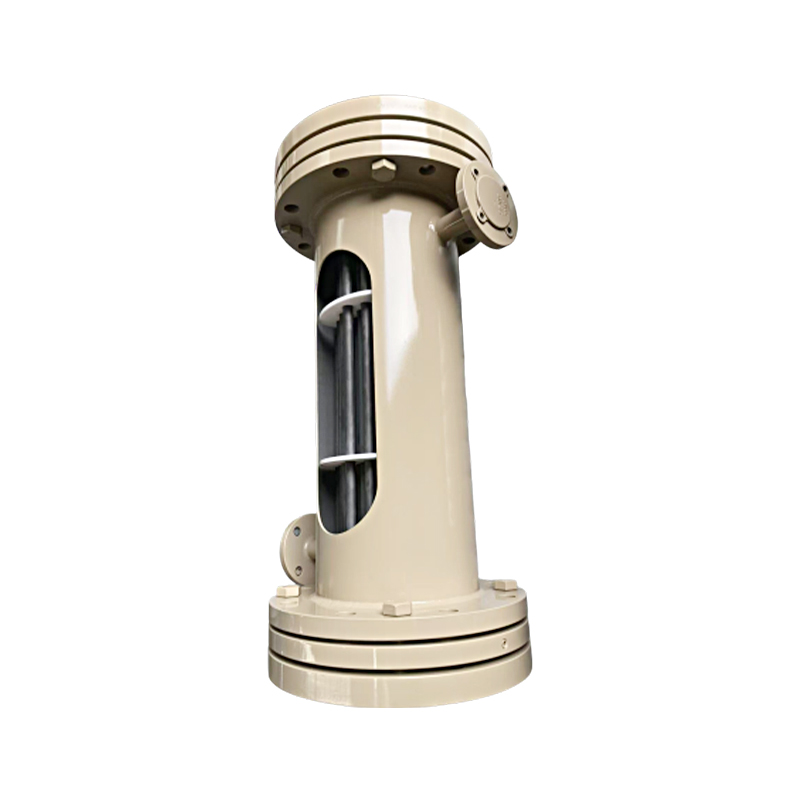How does a high-efficiency shell and tube heat exchanger maintain low fouling rate and high stability in long-term operation?
Release Time : 2025-07-01
The high-efficiency shell and tube heat exchanger maintains low fouling rate and high stability in long-term operation through a series of carefully designed structures and technologies. This heat exchanger not only has efficient heat exchange performance, but also pays special attention to maintenance simplicity and long-term reliability to ensure that it can continue to work stably under complex working conditions.
First of all, the heat exchanger adopts a unique design concept of no baffles, no dead corners, and no retention areas. Traditional heat exchangers often have multiple baffles inside to guide the flow of fluid, but these baffles often form areas with low local flow rates, which become ideal places for fouling deposition. The high-efficiency shell and tube heat exchanger completely abandons the baffle design, allowing the fluid to flow freely throughout the device, avoiding any possible retention points. In this way, impurities in the fluid are not easy to deposit, thereby significantly reducing the risk of fouling.
In addition, the asymmetric flow channel design is also one of the key factors in maintaining a low fouling rate. By optimizing the shape and size of the flow channel, the fluid produces a strong turbulent effect during the flow process. Turbulence can effectively stir the fluid, preventing particulate matter from settling and adhering to the pipe wall. At the same time, this design can also enhance the friction between the fluid and the pipe wall, further promote the washing away of the already formed tiny sediments, and keep the pipe surface clean.
The application of the elastic tube bundle structure also provides strong support for reducing scaling. This structure allows the pipe to expand and contract freely within a certain range to adapt to the thermal expansion and contraction caused by temperature changes. When the pipe is slightly displaced, it will slightly disturb the surrounding fluid, which helps to remove impurities that may be attached to its surface. More importantly, the elastic tube bundle can effectively alleviate the stress concentration problem caused by temperature fluctuations and prevent local wear or corrosion caused by material fatigue or deformation, thereby indirectly reducing the possibility of scaling.
The fully welded structure gives the high efficiency shell and tube heat exchanger excellent pressure resistance and sealing. Compared with the traditional flange connection method, the fully welded process eliminates potential leakage paths and reduces the risk of external contaminants entering the system. This not only ensures the safe operation of the equipment, but also avoids internal contamination and scaling caused by the intrusion of external media. At the same time, good sealing helps to maintain stable working conditions, which is conducive to extending the service life of the equipment and maintaining a high heat exchange efficiency.
The patented tangential feed structure is another innovative design, which aims to optimize fluid distribution, improve heat exchange effect and reduce fouling tendency. By precisely controlling the direction and speed of the fluid at the inlet, the fluid can be evenly distributed in each channel to avoid local overheating or deposition caused by uneven flow rate. Reasonable fluid distribution can not only improve the overall heat exchange efficiency, but also minimize the formation of local high-temperature areas, thereby inhibiting the occurrence of fouling.
In order to further improve the anti-fouling ability of the equipment, advanced surface treatment technology is also used in the manufacturing process. For example, applying a special coating on the surface of the tube wall can not only enhance its smoothness and flatness, but also give it a certain self-cleaning function. These coatings have good hydrophobicity and anti-adhesion properties. Even if a small amount of impurities try to adhere, they are easily carried away by the flowing fluid and will not form a stubborn scale layer.
Finally, it is worth mentioning that the high efficiency shell and tube heat exchanger was designed with full consideration of the need for easy cleaning and maintenance. Although the above-mentioned measures have greatly reduced the probability of fouling, regular inspection and cleaning are still essential maintenance methods in actual applications. To this end, the equipment is designed with a structure that is easy to disassemble and clean, which is convenient for operators to carry out daily maintenance work. This not only ensures that the equipment is in the best working condition for a long time, but also saves users a lot of time and cost.
In summary, the high efficiency shell and tube heat exchanger achieves low scaling rate and high stability in long-term operation with its unique design concept and advanced technology. Whether it is optimizing the flow channel design from the perspective of fluid mechanics, or using an elastic tube bundle structure to reduce the impact of stress, or enhancing anti-scaling performance through surface treatment technology, every detail demonstrates the unremitting pursuit of quality. It is these comprehensive advantages that make this heat exchanger an ideal choice in many industrial fields, providing users with a reliable and efficient solution. With the continuous advancement of technology, this type of equipment will continue to evolve in the future to meet the growing market demand.
First of all, the heat exchanger adopts a unique design concept of no baffles, no dead corners, and no retention areas. Traditional heat exchangers often have multiple baffles inside to guide the flow of fluid, but these baffles often form areas with low local flow rates, which become ideal places for fouling deposition. The high-efficiency shell and tube heat exchanger completely abandons the baffle design, allowing the fluid to flow freely throughout the device, avoiding any possible retention points. In this way, impurities in the fluid are not easy to deposit, thereby significantly reducing the risk of fouling.
In addition, the asymmetric flow channel design is also one of the key factors in maintaining a low fouling rate. By optimizing the shape and size of the flow channel, the fluid produces a strong turbulent effect during the flow process. Turbulence can effectively stir the fluid, preventing particulate matter from settling and adhering to the pipe wall. At the same time, this design can also enhance the friction between the fluid and the pipe wall, further promote the washing away of the already formed tiny sediments, and keep the pipe surface clean.
The application of the elastic tube bundle structure also provides strong support for reducing scaling. This structure allows the pipe to expand and contract freely within a certain range to adapt to the thermal expansion and contraction caused by temperature changes. When the pipe is slightly displaced, it will slightly disturb the surrounding fluid, which helps to remove impurities that may be attached to its surface. More importantly, the elastic tube bundle can effectively alleviate the stress concentration problem caused by temperature fluctuations and prevent local wear or corrosion caused by material fatigue or deformation, thereby indirectly reducing the possibility of scaling.
The fully welded structure gives the high efficiency shell and tube heat exchanger excellent pressure resistance and sealing. Compared with the traditional flange connection method, the fully welded process eliminates potential leakage paths and reduces the risk of external contaminants entering the system. This not only ensures the safe operation of the equipment, but also avoids internal contamination and scaling caused by the intrusion of external media. At the same time, good sealing helps to maintain stable working conditions, which is conducive to extending the service life of the equipment and maintaining a high heat exchange efficiency.
The patented tangential feed structure is another innovative design, which aims to optimize fluid distribution, improve heat exchange effect and reduce fouling tendency. By precisely controlling the direction and speed of the fluid at the inlet, the fluid can be evenly distributed in each channel to avoid local overheating or deposition caused by uneven flow rate. Reasonable fluid distribution can not only improve the overall heat exchange efficiency, but also minimize the formation of local high-temperature areas, thereby inhibiting the occurrence of fouling.
In order to further improve the anti-fouling ability of the equipment, advanced surface treatment technology is also used in the manufacturing process. For example, applying a special coating on the surface of the tube wall can not only enhance its smoothness and flatness, but also give it a certain self-cleaning function. These coatings have good hydrophobicity and anti-adhesion properties. Even if a small amount of impurities try to adhere, they are easily carried away by the flowing fluid and will not form a stubborn scale layer.
Finally, it is worth mentioning that the high efficiency shell and tube heat exchanger was designed with full consideration of the need for easy cleaning and maintenance. Although the above-mentioned measures have greatly reduced the probability of fouling, regular inspection and cleaning are still essential maintenance methods in actual applications. To this end, the equipment is designed with a structure that is easy to disassemble and clean, which is convenient for operators to carry out daily maintenance work. This not only ensures that the equipment is in the best working condition for a long time, but also saves users a lot of time and cost.
In summary, the high efficiency shell and tube heat exchanger achieves low scaling rate and high stability in long-term operation with its unique design concept and advanced technology. Whether it is optimizing the flow channel design from the perspective of fluid mechanics, or using an elastic tube bundle structure to reduce the impact of stress, or enhancing anti-scaling performance through surface treatment technology, every detail demonstrates the unremitting pursuit of quality. It is these comprehensive advantages that make this heat exchanger an ideal choice in many industrial fields, providing users with a reliable and efficient solution. With the continuous advancement of technology, this type of equipment will continue to evolve in the future to meet the growing market demand.








